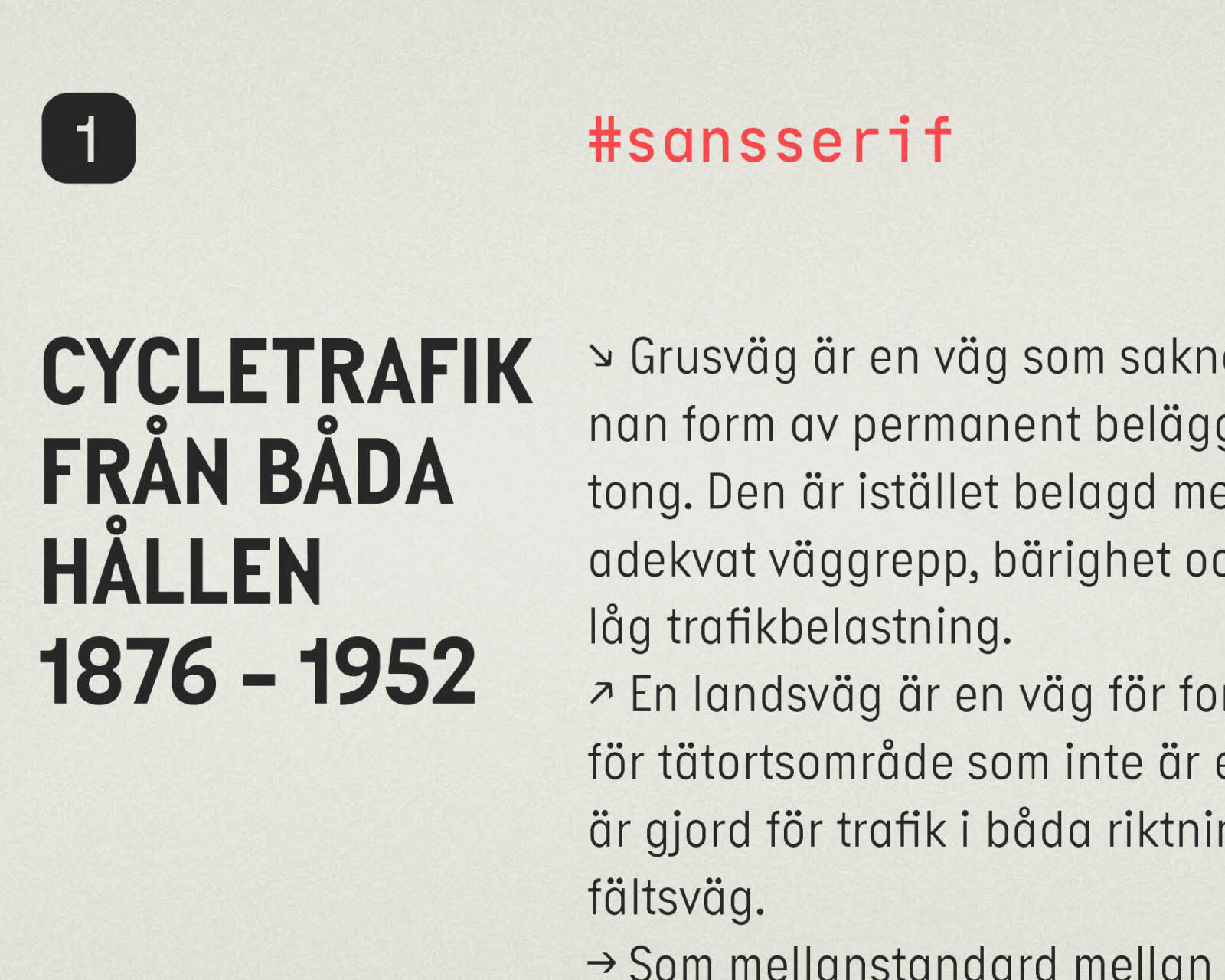Complete family from € 260.00

Inspired by Finnish licence plates, Piet is a playful pair of constructed typefaces defined by strange numbers and deep, rounded ink traps. Consisting of Mono and Sans, Piet is bureaucratic at first sight, but with a closer look you’ll find the utilitarian hooked up to the weird, the stiff wired to the wonky, and the italics connected to the battery.
Not pretty, nor refined, Piet is unmistakable. Its shapes are practical and almost unbreakable. With chunky forms and more and less than the expected optical corrections, it is functional, visually unbalanced and narrow. With no cruise control on its ever-present idiosyncrasy, Piet turns its ‘limitations’ into fuel.
Piet is a pair of typefaces. If the Mono feels too fixed, change gear with the sans. Originating from the Mono, it has been (sorta!) fine-tuned with proportional spacing, kerning and some gentler forms for easier reading.
The italics of the Mono and the Sans could hardly be more divergent. Where the italics of the sans are simply slanted, the Mono’s demand prominence. All new shapes — even in x, w and z — and a tender touch is infused into the Mono’s fixed widths. With rotated shapes the caps catch the eye and their adherence to the baseline introduces a raw tension visible in the E, L and Z.
Whether defining a wayfinding system for the Arctic Circle, adding exuberance to the minimalist packaging of natural yoghurt, or ordering markdown documents, Piet is at home with the strange and a getaway car from the average.
Piet Sans and Mono each have four weights and —at times unconventional— matching italics. They provide all the OpenType features needed for ambitious typography: subscripts, fractions, tabular and lining figures, localised shapes and stylistic alternates to accelerate your typographic possibilities.
A look under the hood reveals: Piet Mono’s ss02 has non-stretched letters to intensify its attractive, inharmonious whitespace. By contrast, Piet Sans’s ss02 makes it more mono with mechanical semi serifs. Across Mono and sans, ss03 brings a striking flavour with upright italic shapes. In the toolbox of ss01, you’ll find an alternate a!
- Designed by
-
Nils Thomsen
in 2024 - Specs
- 16 styles in 4 weights plus Italics, more than 550 glyphs per font
- Formats
- OTF and TTF for desktop and apps, and WOFF and WOFF2 for web
- Tags
- SansRegularMonospaceHeadlinesBody TextInterfaceSignageLatinGeometricIndustrialVariable FontItalicsDuplexAlternates
- Related Typefaces
- Elma, Comspot, Cera Mono
Piet Mono
- Thin
- Thin Italic
- Light
- Light Italic
- Regular
- Regular Italic
- Bold
- Bold Italic
Piet Sans
- Thin
- Thin Italic
- Light
- Light Italic
- Regular
- Regular Italic
- Bold
- Bold Italic
Character Set
Language Support
